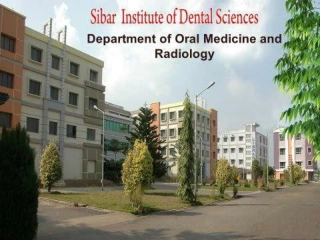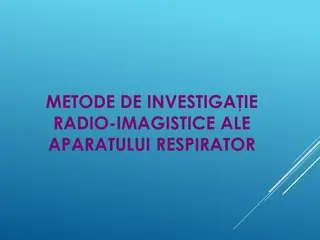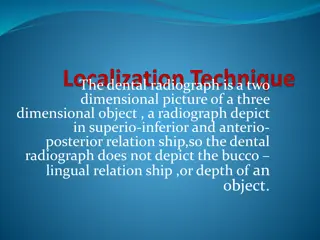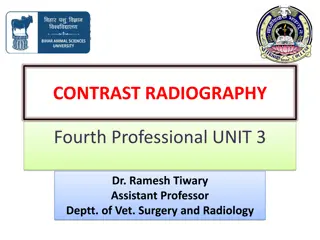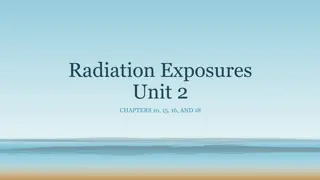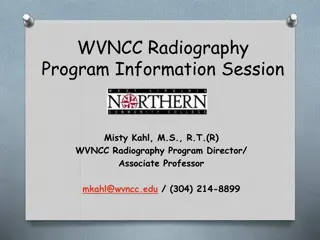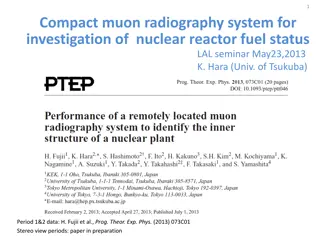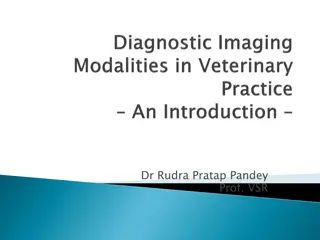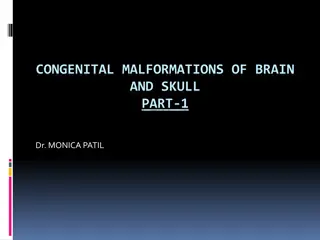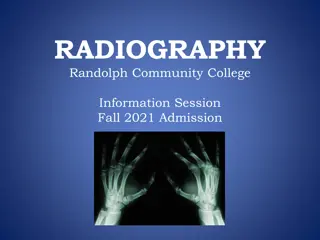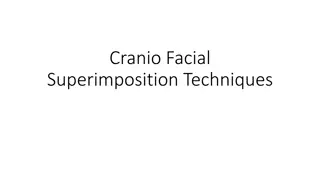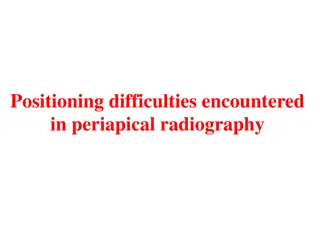RADIOGRAPHY OF SKULL RADIOGRAPHY OF SKULL
This extraoral radiographic technique provides various projections to view skull structures for evaluating anomalies, fractures, and paranasal sinuses. It includes images, positioning details, indications, and patient orientation.
Download Presentation

Please find below an Image/Link to download the presentation.
The content on the website is provided AS IS for your information and personal use only. It may not be sold, licensed, or shared on other websites without obtaining consent from the author.If you encounter any issues during the download, it is possible that the publisher has removed the file from their server.
You are allowed to download the files provided on this website for personal or commercial use, subject to the condition that they are used lawfully. All files are the property of their respective owners.
The content on the website is provided AS IS for your information and personal use only. It may not be sold, licensed, or shared on other websites without obtaining consent from the author.
E N D
Presentation Transcript
RADIOGRAPHY OF SKULL RADIOGRAPHY OF SKULL
INTRODUCTION This is an extraoral radiographic technique which uses various projections to view the structures of the skull.this is useful to view the development anomalies, fractures & paranasal sinuses.
LATERAL CEPHALOGRAM TRUE LATERAL PA CEPHALOGRAM PA SKULL TOWNE S PROJECTION
LATERAL CEPHALOGRAM To evaluate facial growth & development, trauma, disease and developmental anomalies This demonstrates the bones of the face, skull as well as the soft tissues
IMAGE RECEPTOR & PATIENT PLACEMENT Positioned parallel to the patient s mid sagittal plane Patient is placed with left side toward the image receptor wedge filter at the tube head is positioned over the anterior aspect of the beam To absorb some of the radiation Allow visualization of soft tissues of the face.
POSITION OF THE CENTRAL X-RAY BEAM: Perpendicular to the midsagittal plane of the patient & the plane of the image receptor It is centered over the external auditory meatus.
TRUE LATERAL INDICATIONS: Survey the skull & facial bones To detect trauma, disease or developmental abnormality Reveals the nasopharyngeal soft tissues, paranasal sinuses and hard palate Conditions affecting the skull vault & sella turcica.
FILM & PATIENT POSITION Film is held vertically against the pt s cheek. Sagittal plane of pt vertical & parallel to the film. Upper circumference of the skull is inch below the upper border of the cassette. Teeth should be in occlusion Occlusal plane should be parallel to the floor.
CENTRAL RAY: Directed perpendicular to the cassette & mid sagittal plane and centered through the EAM. EXPOSURE PARAMETERS: kVp- 65 mA- 10 Seconds 0.5-2
PA CEPHALOGRAM STRUCTURES SHOWN: Used for the assessment of facial asymmetries For preoperative and postoperative comparisons in orthognathic surgeries involving mandible.
FILM & PATIENT POSITION Cassette is placed perpendicular to the floor in a cassette holding device. Long-axis of the cassette is positioned vertically. Sagittal plane of the pt should be vertical & perpendicular to the film Head is tipped downwards, nose touches the film
Central ray: Directed at right angles to the film through the mid sagittal plane Centered at the level of the bridge of the nose EXPOSURE PARAMETERS: kVp- 84 mA- 13 Seconds 1.5
PA SKULL INDICATIONS: Fractures of the skull vault Investigation of frontal sinuses Conditions affecting the cranium Paget s disease Multiple myeloma Hyperparathyroidism Intracranial calcification.
FLIM POSITION: Cassette is placed perpendicular to the floor in a cassette holding device. Long-axis of the cassette is positioned vertically. PATIENT POSITION: Sagittal plane of the pt should be vertical & perpendicular to the film Head is tipped downwards, forehead & nose touches the film
CENTRAL RAY: Directed at right angles to the film through the midsagittal plane through the occiput. EXPOSURE PARAMETERS: kVp- 65 mA- 1O Seconds 2-3
TOWNES PROJECTION occipital area of the skull Necks of the condyle.
FILM PLACEMENT: Cassette is placed perpendicular to the floor in a cassette holding device. Long-axis of the cassette is positioned vertically. PATIENT POSITION: Back of the pt s head touching the film. Canthomeatal line is perpendicular to the film
CENTRAL RAY: Directed at 300 to the canthomeatal line and passes through EAM. EXPOSURE PARAMETERS: kVp- 65 mA- 1O Seconds 2-3


